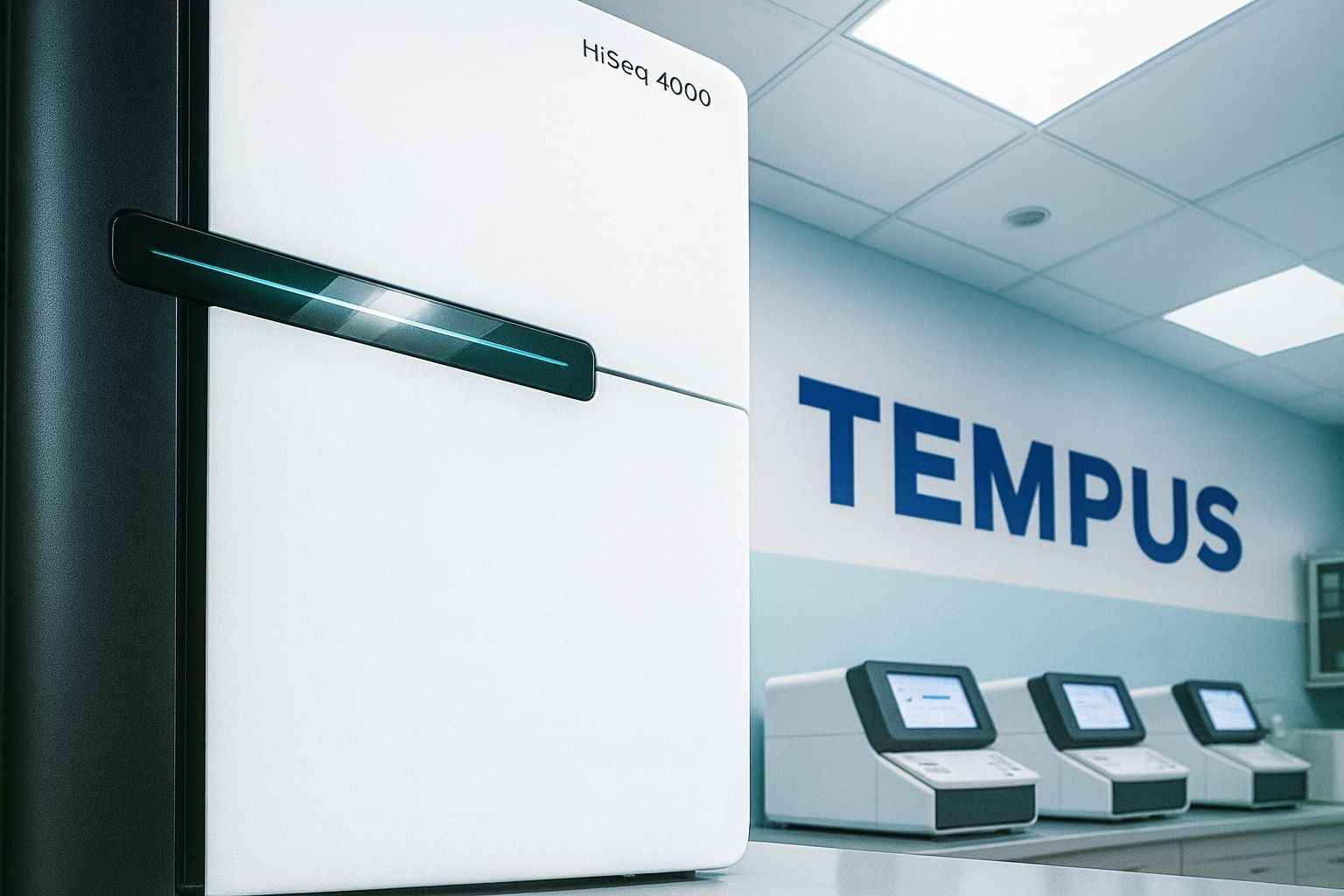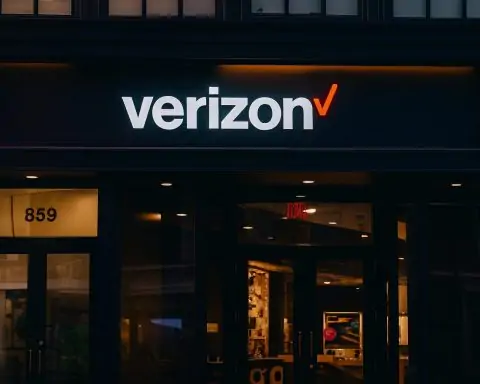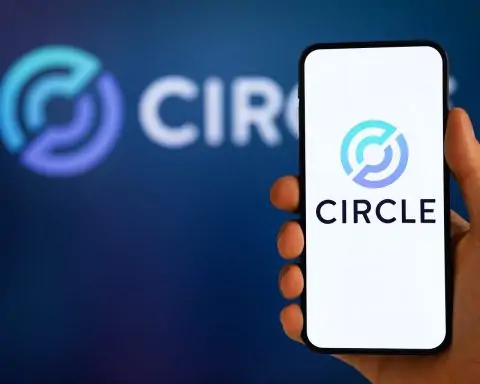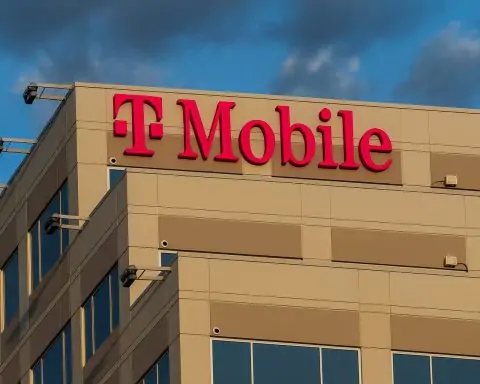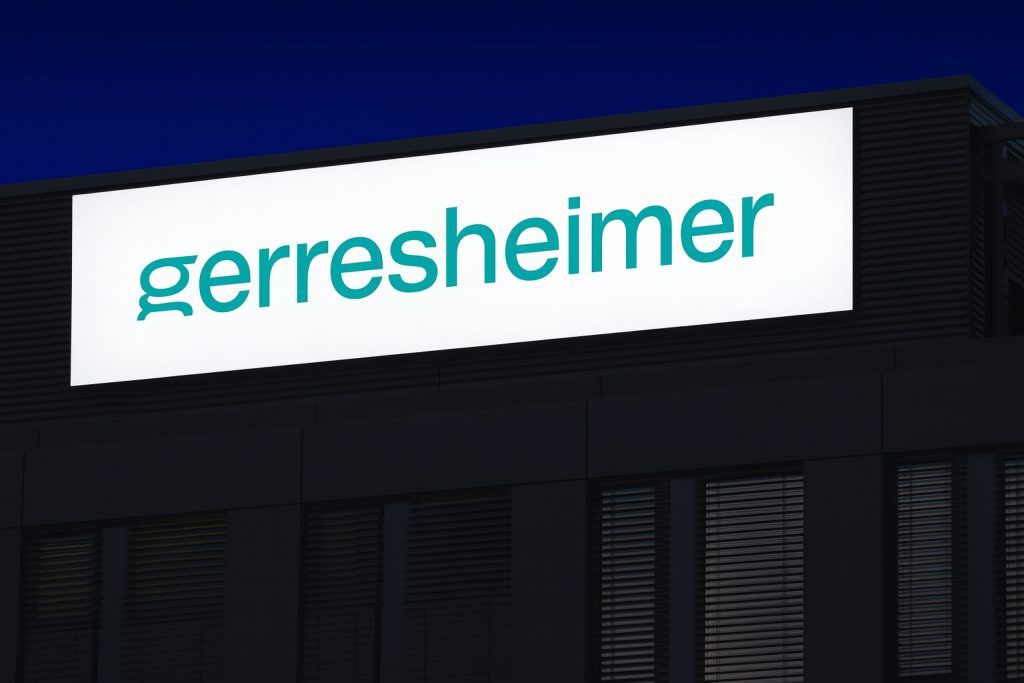- Record-High Stock Price: Tempus AI, Inc. (NASDAQ: TEM) has seen its stock soar to all-time highs in early October 2025. Shares closed around $102.31 on Oct 8, jumping nearly +10% in one day to a new peak [1]. The stock has almost tripled in 2025 (≈+190% year-to-date), vastly outperforming the broader market and reflecting bullish sentiment around AI-driven healthcare [2] [3].
- Explosive Growth & Financials: Tempus is delivering blistering revenue growth. In Q2 2025, revenue surged 89.6% YoY to $314.6 million, handily beating estimates [4] [5]. First-half 2025 revenues topped $570M after a 75% jump in Q1 [6]. The company raised its full-year 2025 revenue guidance to $1.26 billion (~80% growth over 2024) [7]. Net losses are narrowing – Q2’s loss was $0.22/share (slightly better than expected) and Tempus now forecasts positive adjusted EBITDA (~$5M) for 2025 [8]. Gross margins are robust (~62% in Q2) and improving as scale grows [9].
- AI Breakthroughs & FDA Wins: Recent product breakthroughs have validated Tempus’s AI in healthcare. In September 2025, Tempus received U.S. FDA 510(k) clearance for two flagship offerings: its updated Tempus Pixel – an AI-powered cardiac MRI imaging tool – and Tempus xR – an RNA sequencing test for tumor genomics [10] [11]. These regulatory green lights expand Tempus’s reach beyond oncology (Pixel brings it into cardiology) and lend credibility to its technology. Wall Street took notice: for example, H.C. Wainwright hiked its price target from $90 to $98 after the Pixel approval, citing new growth potential [12] [13], and Guggenheim upped its target to $95 on momentum from the xR clearance [14] [15].
- Data & Platform “Moat”: Tempus has built one of the world’s largest libraries of clinical and molecular data – aggregating millions of patient records and genomic sequences – which serves as a formidable “data moat” for its AI platform [16]. This trove of real-world data (bolstered by over 2,000 hospital/research partners) powers Tempus’s AI models in oncology, cardiology, and beyond, giving it a competitive edge. Notably, Tempus inked a $200 million data licensing partnership with AstraZeneca to develop AI oncology models, exemplifying how it monetizes its data assets [17]. Analysts say this massive dataset and Tempus’s integrated approach (combining lab services, AI software, and clinical partnerships) position it as a first-mover in precision medicine AI [18].
- Strategic Expansion (M&A and Partnerships): Tempus is rapidly expanding its capabilities through acquisitions and collaborations. In August 2025, it acquired Paige, a leading digital pathology AI firm, for $81.3 million [19]. This brings Tempus an FDA-approved AI system for analyzing pathology slides and ~7 million digitized pathology images – a treasure trove to train cancer AI models [20]. The deal was seen as bolstering Tempus’s all-in-one cancer diagnostics platform. Tempus has also struck key partnerships, such as an exclusive 2025–2028 deal with Personalis to offer a minimal residual disease (MRD) test for colorectal cancer [21], and a collaboration with Northwestern Medicine to deploy “Tempus One,” its generative AI clinical assistant, in hospital workflows [22]. These moves broaden Tempus’s reach and signal its intent to be a one-stop AI platform in healthcare.
- Analyst & Expert Outlook:Wall Street sentiment on TEM remains largely bullish. Multiple analysts have recently raised targets into the high-$90s after Tempus’s strong Q2 and FDA wins [23] [24]. For instance, TD Cowen sees continued upside as Tempus gains share in genomic testing (it lifted its target from $62 to $72 after Q2, impressed by surging volumes in Tempus’s Ambry genetics unit) [25] [26]. Tempus is now a top holding in ARK Invest’s Genomic Revolution ETF, reflecting high conviction from tech-focused investors [27]. However, some experts urge valuation caution – at ~$102, Tempus commands a ~$16–17 billion market cap (~13× 2025 sales) [28]. CNBC’s Jim Cramer, for example, warned that Tempus is “losing money hand over fist” and prefers profitable AI plays like Nvidia [29]. Overall, the 2025 outlook for Tempus is optimistic given its growth trajectory, but investors are mindful that the stock’s rich pricing leaves little room for error.
Stock Price Surge: From IPO to Record Highs
Tempus AI’s stock has been on a remarkable tear since its mid-2024 IPO. The Chicago-based healthtech firm – founded in 2015 by Eric Lefkofsky (of Groupon fame) – went public in June 2024 at around $21 per share, and the price has since quadrupled [30]. After a steady climb through 2024, momentum accelerated in 2025 as the company delivered strong results and AI breakthroughs. By early September 2025, TEM had more than doubled its IPO price, reaching the high-$80s to $90 range [31].
A series of catalysts (detailed below) then propelled the stock to new heights. On September 22, 2025, amid excitement over an FDA clearance, Tempus hit a then-record intraday high near $97.8 [32]. After a brief dip, another rally in October pushed shares into the triple digits. On Oct 8, 2025, TEM surged nearly 10% in a single session – rising from ~$93 to ~$102, with intraday highs around $102.5 [33]. This marked a fresh all-time closing high (~$102.31) [34]. Heavy volume (~9+ million shares traded) accompanied the jump, indicating strong buying interest. Year-to-date, Tempus stock is up roughly +190%, vastly outperforming most tech and biotech indices [35]. The stock has almost tripled in 2025 alone, reflecting investors’ enthusiasm for AI-in-healthcare and Tempus’s execution.
Such explosive gains have made TEM a Wall Street favorite but also introduced volatility. Technical analysts note the stock has been in a well-defined uptrend, consistently logging “higher highs and higher lows” throughout 2025 [36]. It broke through key resistance around the $90 level in late September, which paved the way for October’s push above $100 [37]. Even as the price skyrocketed, dips have tended to be shallow – eager buyers quickly jumped in on any pullback, keeping the rally intact [38].
Chart watchers point out that TEM’s 50-day and 200-day moving averages have trended upward, albeit lagging far below the current price given the rapid rise [39]. Momentum indicators like RSI have occasionally flashed “overbought,” but those signals have been temporary as bullish sentiment prevailed. Volatility is high: daily swings of 5–10% have not been uncommon, especially around news events [40]. For example, when Tempus announced its Pixel FDA clearance on Sept 11, the stock popped ~+13.5% in one day [41]. Conversely, even routine events (like a debt issuance in July) briefly knocked shares down a few percent before buyers stepped back in [42]. On Oct 8, the stock’s $9+ intraday leap was a dramatic move, underlining both the enthusiasm and the risk in a fast-moving growth stock [43]. Options trading on TEM has also increased, as traders speculate on near-term catalysts and volatility [44].
At around $100+ per share, Tempus’s market capitalization now stands near $16–17 billion [45]. Crossing the $100 threshold is psychologically significant – it essentially met or exceeded many analysts’ highest price targets (which had been in the high-$90s) [46]. Hitting this milestone signals broad investor confidence in Tempus’s story, but it also means the stock is “priced for perfection” going forward [47]. Any stumble in execution or growth could spur a sharp pullback, given how much optimism is baked into the price [48]. For now, though, 2025’s stock surge has richly rewarded Tempus shareholders, mirroring the broader excitement around AI’s potential in healthcare.
(As of the market close on Oct 8, 2025, TEM traded at ~$103; pre-market Oct 9 indicated a slight dip, around $100.9 [49]. Investors should expect continued price volatility as new information emerges.)
Latest Catalysts: News Fueling the Rally
Tempus AI’s recent news flow reads like a highlight reel of achievements in late summer and fall 2025. A flurry of positive developments has kept the stock in the spotlight and helped justify its rapid rise. Here are some of the major catalysts from the past few months:
- FDA Clearances (Sept 2025): Regulatory wins have been front and center. On Sept 11, 2025, Tempus announced FDA 510(k) clearance for its updated Tempus Pixel platform [50]. Pixel is an AI-driven cardiac MRI analysis tool, and the new clearance allows it to generate advanced T1/T2 maps from heart scans, improving diagnosis of cardiac conditions [51]. This marked Tempus’s first big step beyond oncology into cardiovascular AI. Just days later (Sept 22, 2025), Tempus received FDA clearance for Tempus xR IVD, an RNA-based genomic test for tumors [52]. The xR test detects gene rearrangements in cancers to aid drug development and precision treatment [53]. Such back-to-back approvals underscored the breadth of Tempus’s AI tech (from heart disease to oncology tools) and provided external validation of its clinical value. Investors cheered these milestones – each FDA nod not only opens up a new revenue stream but also boosts Tempus’s credibility in a field where regulatory trust is crucial. The stock jumped in reaction (Tempus shares spiked ~+13% on Sept 11 following the Pixel news) [54]. Analysts likewise responded: H.C. Wainwright promptly raised its price target from $90 to $98, citing the Pixel clearance’s expansion of Tempus’s addressable market [55] [56]. After the xR clearance, Guggenheim upped its target to $95 and reiterated a Buy, highlighting momentum in Tempus’s oncology franchise [57] [58].
- Product & Platform Enhancements: Beyond headline-grabbing approvals, Tempus has been steadily improving its platform. In early September, the company updated its hereditary breast cancer risk model (via its Ambry Genetics division) to incorporate breast density data into risk scores [59]. This kind of incremental upgrade – adding an AI-analyzed factor to an existing genetic risk model – can enhance the accuracy of screening recommendations. It shows Tempus leveraging AI to refine diagnostics continually. Around the same time, Tempus expanded Tempus Next, its AI-powered clinical decision support platform, into breast cancer care pathways [60]. Tempus Next had launched in 2024 to guide treatment decisions; by mid-2025 it was rolled out to help doctors navigate breast cancer cases specifically, assisted by generative AI. These platform moves, while not as flashy as an FDA approval, demonstrate Tempus’s strategy of embedding AI into clinical workflows (e.g. its “Tempus One” AI assistant now piloted at Northwestern Medicine) [61]. Together, they indicate that Tempus is not just creating diagnostic tests, but building an ecosystem of AI tools spanning various diseases and care settings.
- Major Acquisition – Paige (Aug 2025): In a bold bid to strengthen its oncology AI dominance, Tempus announced the acquisition of Paige on Aug 22, 2025. Paige is a renowned digital pathology AI startup that was the first to gain FDA approval for an AI in pathology (for detecting prostate cancer). Tempus paid $81.25 million in a cash-and-stock deal [62] to bring Paige into the fold. The strategic rationale is compelling: Paige comes with an enormous proprietary dataset of ~7 million digitized pathology slides from 45 countries [63], many annotated for cancer – an invaluable asset for training AI models. Tempus can now integrate pathology imaging data with its existing genomic and clinical data, aiming to build the largest AI model in oncology that spans DNA, RNA, radiology, and pathology [64]. The acquisition also adds Paige’s skilled AI engineering team and its industry relationships (including a Microsoft Azure partnership) [65]. Observers noted the purchase price was relatively modest given Paige’s past VC funding, suggesting Tempus got a good deal to boost its data moat [66]. The market reacted enthusiastically – acquiring Paige signaled that Tempus is serious about being the one-stop AI platform for cancer, and it fills a key piece (pathology) in the product puzzle. Executives said the buyout “substantially accelerates our efforts” in building comprehensive oncology AI [67], and investors evidently agreed.
- Strategic Partnerships: Tempus has also been busy on the partnership front, extending its reach via alliances:
- In July 2025, Tempus expanded a partnership with Personalis (a cancer genomics and minimal residual disease company). Tempus gained exclusive rights to market Personalis’s NeXT Personal MRD blood test for colorectal cancer (and several other cancers) through 2028 [68]. This test detects tiny traces of cancer DNA in blood to catch cancer recurrence early – a hot area in oncology. By securing exclusivity, Tempus can offer this advanced liquid biopsy test to its network of oncologists, complementing its own genomic testing. The partnership underscores Tempus’s “platform” approach: if a capability is outside its core (here, MRD monitoring), it will partner to offer a full suite of services [69] [70].
- In early September, Northwestern Medicine became the first health system to integrate Tempus’s AI assistant (code-named “David”) into its electronic health record system [71]. This pilot deployment of a generative AI clinical assistant allows physicians to query patient data and get AI-driven insights at the point of care. If successful, it could pave the way for Tempus to roll out similar co-pilot tools to many hospitals, embedding its AI deeply into clinical workflows [72]. It’s a notable step toward “AI in the clinic” and diversifies Tempus beyond lab testing into clinical software.
- Tempus’s earlier partnership moves also bear mentioning: In late 2024 it partnered with SoftBank to form a joint venture in Japan, and it acquired Ambry Genetics (a hereditary testing leader) for $600M [73]. By 2025, these moves have paid off – Ambry’s hereditary test volumes grew 30%+ year-on-year under Tempus [74], showing successful integration.
All told, this cascade of good news in Q3 2025 – regulatory approvals, product launches, a savvy acquisition, and partnerships – has painted Tempus as a company firing on all cylinders. One media report described it as a “flurry of good news” that had Tempus stock trending up over 5% on Aug 14, as investors digested the updates [75]. Importantly, each development feeds into Tempus’s long-term narrative: building a dominant AI-driven “operating system” for healthcare. FDA clearances lend clinical validation (a big trust signal in medtech), the Paige deal and Personalis tie-up expand its data and product breadth, and real-world deployments (like at Northwestern) demonstrate traction. This momentum has undoubtedly been a key driver of the stock’s rally. The challenge ahead will be execution – e.g. successfully integrating Paige’s technology and data, monetizing the new Pixel and xR tests, and scaling the AI assistant. But so far, Tempus’s aggressive moves in 2025 have laid groundwork for continued growth, and the market’s reaction has been decidedly positive.
Financial Performance & Fundamental Analysis
Despite being public for only about a year, Tempus AI has put up eye-popping financial growth that sets it apart from many healthcare startups. Investors are closely watching whether Tempus can maintain this growth while inching toward profitability. Here’s an overview of the key fundamentals:
Revenue Growth: Tempus’s top-line growth has been tremendous. In 2024, the company generated roughly ~$700 million in revenue [76]. For 2025, Tempus has raised its revenue guidance to $1.26 billion [77] – implying about ~80% year-over-year growth. The first half of 2025 already delivered $570+ million in revenue, putting Tempus on track to hit that target. Breaking it down:
- Q1 2025: Revenue of $255.7 million, up +75.4% from Q1 2024 [78]. This strong start was driven by growth across both of Tempus’s segments – testing and data. Management highlighted a large $200 million data licensing deal (with pharma partners AstraZeneca and Pathos) and robust demand for its genomic sequencing tests as key drivers of Q1’s results [79].
- Q2 2025: Revenue of $314.6 million, up +89.6% year-over-year [80]. Notably, Tempus accelerated its growth rate in Q2. The result beat analysts’ expectations (consensus was around $298M) [81], showcasing Tempus’s ability to surprise to the upside. The beat was powered by Genomics revenue up 115% YoY (to $241.8M) and Data/AI services up 36% (to $72.8M) [82]. Oncology testing volumes grew ~26%, and hereditary (Ambry) testing volumes ~32% YoY, reflecting strong uptake [83]. Tempus’s data partnerships also contributed – for instance, revenue from “Insights” data licensing jumped ~40% [84].
On the back of these results, Tempus updated its guidance in August: it now forecasts FY2025 revenue of $1.26B (up from ~$1.15B prior) and even expects to turn a slight adjusted EBITDA profit (~$5M) for the full year [85]. Hitting these ambitious targets will be crucial to justify the stock’s valuation. The next earnings report (Q3 2025, due in early November) will be closely watched to see if Tempus’s hyper-growth is continuing on pace [86].
Margins and Profitability: Tempus is still not GAAP-profitable, but the trends are encouraging. In Q2 2025, it recorded a net loss of $0.22 per share (≈$42.8M net loss) [87] [88]. While a loss, this was narrower than expected (analysts had predicted about a $0.25 loss) [89] and a vast improvement from the year-ago Q2 loss ($552M loss in Q2 2024, which included significant one-time charges) [90]. Tempus’s gross profit in Q2 was $195M, leaping +158% YoY with gross margins around 62% [91] [92] – very healthy for a lab/tech company and up from ~45% gross margin a year prior. This margin expansion shows strong operating leverage as volumes grow. Adjusted EBITDA in Q2 was roughly -$5.6M, a big improvement from -$31M a year ago [93]. In fact, Q2 saw a ~30% sequential improvement in adjusted EBITDA versus Q1 [94]. The company has been controlling costs even as it scales – an encouraging sign that profitability is on the horizon. Tempus’s CEO has frequently emphasized this progress: in the Q2 call, CEO Eric Lefkofsky noted “margins [are] growing faster than expected” and stated “we’re hitting our stride” as the business approaches its 10th anniversary [95] [96]. He highlighted the “significant re-acceleration” in clinical test volumes and the company’s AI leadership, projecting confidence about Tempus’s trajectory [97]. This bullish management commentary – “hitting our stride” – was picked up in the media and encapsulates why many investors are excited about Tempus’s future [98].
The company’s balance sheet is also stronger after recent moves. In July, Tempus issued $750 million of convertible notes at just 0.75% interest [99], using proceeds to refinance older debt at lower cost. This reduces interest expense and gives Tempus ample cash to fund expansion. As of Q2, Tempus had ~$293M in cash and marketable securities on hand [100] (and this was before the note offering, which further bolstered liquidity). Additionally, management surprised investors by executing a small share buyback in mid-2025 – a rarity for a fast-growth company, and a signal they believed the stock was undervalued [101]. All told, Tempus appears to be in a solid financial position to support its rapid growth: it has a clear path to profitability (aiming for EBITDA breakeven this year), strong revenue momentum, and sufficient capital to invest in R&D and strategic deals.
Valuation: With the stock’s surge, Tempus’s valuation has become quite rich. At ~$102/share, the company’s market cap is about $16–17 billion [102]. In terms of multiples, that’s roughly ~13× 2025 sales (using the $1.26B revenue forecast) [103]. For context, many established medtech or lab companies trade at 4–8× sales, and even high-growth tech stocks often trade in the teens price-to-sales. A >13× multiple indicates that investors are pricing in a lot of future growth. Bulls argue that Tempus deserves a premium given its ~80% growth rate and expanding margins, essentially viewing it more as a high-growth “AI tech” play than a traditional lab company. And compared to pure software AI companies, a 13× sales multiple isn’t unheard of. Additionally, Tempus’s enormous data assets (see below) and recurring revenue streams (testing volumes, data licensing deals) support the high valuation in the eyes of growth investors.
However, skeptics point to risks. Tempus is still losing money on a net income basis, which means it is valued at a large multiple of not just sales but infinite P/E for now (no earnings). The stock’s run-up could be vulnerable if growth even slightly disappoints. As CNBC’s Jim Cramer cautioned, Tempus – though exciting – is “losing money hand over fist” and faces competition, so some prefer more proven profitable AI plays [104]. Essentially, at this valuation Tempus must execute near-flawlessly to grow into its market cap. The good news is that so far, it has delivered on growth expectations (and then some). The upcoming quarters will determine if it can keep doing so and perhaps start turning quarterly profits. Wall Street analysts, for their part, seem generally comfortable with Tempus’s valuation given its growth; many have price targets in the $90+ range and argue the premium is justified by Tempus’s market leadership and potential to dominate a huge addressable market [105].
Competitive Positioning in AI-Powered Healthcare
Tempus AI sits at the intersection of two dynamic sectors: artificial intelligence and healthcare technology. The company’s mission to build a universal “healthcare operating system” powered by data gives it a broad playing field – but also pits it against a range of competitors, from industry incumbents to big tech. Here’s how Tempus stacks up in the competitive landscape:
- Genomic Testing & Precision Oncology: Tempus’s core business of genomic sequencing for cancer (and now hereditary conditions via Ambry) faces competition from both traditional labs and NGS (next-gen sequencing) companies. Notably, Illumina – the leader in DNA sequencing technology – has a subsidiary, Grail, focused on multi-cancer early detection. While Illumina mainly sells sequencers rather than clinical tests, Grail’s blood test for early cancer screening is a high-profile entrant in AI-driven oncology, somewhat adjacent to Tempus’s tumor profiling focus. Other precision oncology players include Foundation Medicine and Flatiron Health (both part of Roche) which curate oncology data and provide decision support tools for cancer treatment, similar in spirit to Tempus’s data+AI approach. Guardant Health and Natera are leaders in liquid biopsy (blood-based cancer diagnostics) – an area Tempus is entering with its new TRM liquid biopsy for immunotherapy monitoring [106]. Tempus’s partnership with Personalis for MRD testing is directly aimed at competing in that emerging niche. In short, cancer genomics and diagnostics is a crowded space, but Tempus’s differentiator is its end-to-end platform: many rivals do one thing (e.g. sequencing, or data analysis, or blood tests), whereas Tempus is assembling capabilities across the board (tissue genomics, hereditary genetics, liquid biopsy, imaging AI, clinical data).
- AI in Healthcare Data/Software: A number of startups and tech outfits are applying AI to healthcare data. Tempus’s advantage here is its massive proprietary dataset. The company has amassed over 9 million de-identified patient records (linked to ~4 million genetic samples sequenced by Tempus labs) and over 350 petabytes of data, through integrations with 4,500+ hospitals and practices [107] [108]. This scale of real-world data is hard for a new startup to replicate. It’s telling that even Google – which has made forays into healthcare AI – chose to invest in Tempus (Google was an early Tempus backer) rather than build such a dataset from scratch [109]. Other big tech firms have tried to marry AI with health data (IBM’s Watson Health was a famous example that struggled), but analysts believe Tempus’s head start and data depth give it a moat [110]. In essence, data is the new oil for AI, and Tempus has one of the largest oil fields in healthcare. This doesn’t make it invincible, but it’s a significant leg up. Additionally, Tempus’s strategy of providing both lab services and AI software creates a network effect: each test it runs not only generates revenue but also feeds more data into its AI, improving the platform for the next customer. This virtuous cycle is something more one-dimensional competitors might lack.
- Emerging AI Health Startups: There are numerous startups focusing on narrower aspects of AI healthcare – from imaging AI companies (like Paige, which Tempus acquired, or competitors like PathAI) to AI-driven telehealth or drug discovery firms. Tempus has shown it’s willing to partner or acquire to plug any gaps (as seen with Paige, Personalis, etc.). Its broad platform approach means many startups could actually become collaborators feeding into Tempus’s ecosystem rather than direct threats. Still, in each domain (pathology, radiology, etc.) there are innovative players. Tempus’s challenge will be to remain the platform of choice and not get out-innovated in any single vertical. Thus far, by snapping up key assets (like Ambry and Paige) and rolling out new products quickly, Tempus has kept an edge.
- Incumbent Healthcare & Pharma: Large diagnostic companies (e.g. LabCorp, Quest Diagnostics) and pharma companies also loom in the background. Big clinical labs have extensive reach but have been slower in adopting AI at scale – some have partnered with Tempus to utilize its genomic tests. Pharma sees value in Tempus’s data for drug R&D (e.g. the $200M AstraZeneca deal [111]), suggesting Tempus is more partner than competitor to drugmakers. If Tempus’s AI can help pharma develop or target therapies better, it strengthens Tempus’s role. There is always a risk that a big player could invest more heavily to build their own competing data platform, but Tempus’s first-mover advantage and neutrality (it’s not tied to selling drugs or sequencers) make it an attractive collaborator across the industry.
In summary, Tempus’s competitive positioning is quite strong. It faces formidable peers in various niches, but no other company currently offers the same integrated mix of genomic testing, data analytics, and AI tools across multiple disease areas at Tempus’s scale. As one analysis noted, Tempus’s forays from oncology into areas like cardiology (with Pixel) or even ophthalmology down the line mean it is opening up a very large addressable market across healthcare [112]. By leveraging its data “moat” and partnering where needed, Tempus is aiming to be the platform and data network that others rely on – akin to an operating system – rather than just another test maker. This ecosystem strategy, if successful, could make Tempus a central player in AI-powered precision medicine. It’s telling that over 50% of U.S. oncologists reportedly use Tempus’s platform or services in some form [113], indicating significant penetration. Tempus’s inclusion as a top holding in ARK’s Genomic ETF also underscores that many view it as a leader in the genomic AI space [114].
Of course, competition will only intensify as the AI healthcare revolution grows. Tech giants, sensing the opportunity, will continue to invest in this arena (Microsoft, Amazon, and others all have health AI initiatives). Startups will innovate at the edges. Tempus will need to maintain its rapid pace of innovation and execution to fend off challengers. But for now, it appears to be at the forefront of the AI-meets-healthcare wave, with few others matching its combination of data breadth, technology, and clinical integration.
Forward-Looking Outlook and Forecast
As Tempus AI rides this wave of success, the big question is: what’s next for TEM stock and the company’s trajectory? Looking ahead to the coming months and years, several factors will shape the outlook:
- Near-Term Catalysts (Q3 Earnings & Guidance): The most immediate catalyst is Q3 2025 earnings, expected in early November [115]. Given the stock’s huge run-up, investors will be laser-focused on whether Tempus can continue its rapid growth streak. Analysts currently forecast Q3 revenue around $328–330M (implying ~70% YoY growth) and a smaller loss of about $0.19 per share [116]. If Tempus delivers another beat – or shows progress like break-even EBITDA for the quarter – it could further bolster confidence and potentially lead to upward revisions to 2025 guidance. Conversely, any slowdown (e.g. if growth “cools” to, say, 50–60%) might trigger some profit-taking in the stock, given the high expectations. Management’s commentary will also be crucial: investors will look for updates on the Paige integration, uptake of new products like Pixel and xR, and any early read on 2026 outlook or margins. Tempus has surprised to the upside in prior quarters, so there’s optimism going into this report – but also a recognition that comparisons will get tougher as the numbers grow larger.
- Analyst Targets & Sentiment: As noted, many Wall Street analysts have price targets that the stock has already met or exceeded (high-$90s to $100) [117]. If Q3 and Q4 show continued outperformance, we could see a round of analyst upgrades and target hikes, which often serve as catalysts themselves. For instance, after the recent FDA news, Guggenheim and Wainwright raised targets to ~$95 [118] [119], and those could go higher if Tempus keeps beating expectations. On the other hand, some analysts might turn more cautious purely on valuation, even if the business is executing well – we’ve already seen a hint of that with Cramer’s caution [120]. Overall, current sentiment is bullish: TipRanks/TradingView data indicates most analysts rate TEM a Buy, though they also acknowledge it’s a high-risk, high-reward name at this price.
- Future Growth Drivers: Tempus’s long-term growth runway appears substantial. The company is still primarily in oncology, but it has begun expanding into other disease areas (cardiology, hereditary diseases, etc.). Each new area opens additional TAM (total addressable market). For example, the global oncology diagnostics market is tens of billions of dollars, and adding cardiac diagnostics (Pixel) or hereditary risk testing (Ambry) broadens Tempus’s reach. Tempus is also likely to expand internationally – the SoftBank JV in Japan and activities in Europe hint at a global expansion strategy. Furthermore, the nature of Tempus’s model allows for new revenue streams over time: e.g., licensing its AI models or data to pharmaceutical companies (like the AstraZeneca deal) [121], offering AI decision support software to hospitals (like the Northwestern pilot), or even entering adjacent markets like clinical trial management, etc. If Tempus executes, some bulls believe it could eventually become an indispensable infrastructure player in healthcare (the “AWS of healthcare data,” so to speak). That vision supports very lofty long-term valuations.
- Stock Forecasts: While long-term predictions should be taken with caution, some forecasting models and investors envision significant upside for TEM stock over the next 5–10 years. For instance, one analysis projected that Tempus’s stock could potentially double by 2027 and continue climbing thereafter if it maintains high growth (with speculative targets in the $150–200+ range in a few years) [122] [123]. These models assume Tempus will capitalize on its leadership and the continued adoption of AI in healthcare. However, such forecasts are inherently uncertain – they essentially bet that Tempus will fulfill ambitious growth assumptions. It’s worth noting that Tempus’s current valuation already anticipates years of strong growth, so any hurdles along the way could lead to volatility. Investors should be prepared for a bumpy ride: high-growth AI stocks tend to be sensitive to even minor hiccups or shifts in market sentiment.
- Risks and Challenges: On the flip side, there are risks that could temper Tempus’s outlook. Competition is a constant threat – if a rival makes a technological leap or if big tech players get more aggressive in healthcare AI, Tempus could face pressure. Regulatory and reimbursement factors are also key: Tempus’s tests need insurance coverage and physician adoption to drive revenue, and changes in healthcare policy or reimbursement rates could affect demand. There’s also execution risk in integrating acquisitions (Paige, Ambry) and scaling up operations. With headcount growth and many irons in the fire, Tempus must ensure quality doesn’t slip (e.g., maintaining high accuracy in test results, protecting data privacy, etc.). Any high-profile misstep could affect its reputation. Lastly, macro market conditions – interest rates, risk appetite for growth stocks – will influence TEM’s stock performance. As we saw in 2022–2023, growth stocks can be volatile if rates rise or if investors rotate toward “safer” assets. Tempus’s beta is high (~3.3), meaning the stock tends to swing more than 3× the market’s move [124].
Investment Outlook: For now, Tempus AI presents a compelling growth story at the nexus of AI and healthcare. The investment case hinges on Tempus’s ability to sustain rapid revenue growth, expand its AI product portfolio, and eventually turn profitable – thereby growing into its valuation. Many analysts and investors believe Tempus could be a long-term winner given its data advantages and the early leadership it has established in precision medicine AI [125] [126]. The stock’s 2025 rally demonstrates the market’s optimism about that future. Going forward, expect the stock to trade on growth milestones: each quarterly earnings, each new FDA approval or partnership will either reinforce the bullish narrative or test it.
If Tempus continues executing well (e.g. 50%+ growth with improving margins), the current share price could be justified and possibly surpassed – some analysts would argue it’s the kind of name that could compound value over several years as AI transforms healthcare. On the other hand, if growth were to slow materially or if Tempus encounters integration issues, the stock could correct given its lofty pricing. As one analysis put it, at this stage Tempus is “priced for perfection” – a lot has to go right to support its market cap [127]. Thus far, however, Tempus has been delivering near-perfection in results.
Bottom Line: Tempus AI, Inc. has quickly become a star in the AI healthtech arena. Its stock is at record highs on the back of stunning revenue growth, cutting-edge AI products, and strategic moves that few competitors have matched. The company’s blend of big data and AI is unlocking new possibilities in personalized medicine, and investors have taken notice in a big way. Going into late 2025 and beyond, Tempus faces the task of meeting sky-high expectations – but if it can keep up even a portion of its current momentum, the future for this AI-driven healthcare innovator looks bright. The coming months will be pivotal in proving whether Tempus can truly live up to its name and revolutionize the tempo of precision medicine. In the meantime, shareholders are enjoying the ride, as Tempus AI’s stock story in 2025 has been nothing short of extraordinary.
Sources: Tempus investor updates and press releases; ts2.tech analysis [128] [129]; Business Wire [130] [131]; Insider Monkey/Zacks insights [132]; and other financial media reports.
References
1. ts2.tech, 2. ts2.tech, 3. ts2.tech, 4. www.businesswire.com, 5. finviz.com, 6. ts2.tech, 7. www.businesswire.com, 8. ts2.tech, 9. ts2.tech, 10. ts2.tech, 11. ts2.tech, 12. ts2.tech, 13. ts2.tech, 14. ts2.tech, 15. ts2.tech, 16. ts2.tech, 17. ts2.tech, 18. ts2.tech, 19. ts2.tech, 20. ts2.tech, 21. ts2.tech, 22. ts2.tech, 23. ts2.tech, 24. ts2.tech, 25. finviz.com, 26. finviz.com, 27. ts2.tech, 28. ts2.tech, 29. ts2.tech, 30. ts2.tech, 31. ts2.tech, 32. ts2.tech, 33. ts2.tech, 34. ts2.tech, 35. ts2.tech, 36. ts2.tech, 37. ts2.tech, 38. ts2.tech, 39. ts2.tech, 40. ts2.tech, 41. ts2.tech, 42. ts2.tech, 43. ts2.tech, 44. ts2.tech, 45. ts2.tech, 46. ts2.tech, 47. ts2.tech, 48. ts2.tech, 49. stockanalysis.com, 50. ts2.tech, 51. ts2.tech, 52. ts2.tech, 53. ts2.tech, 54. ts2.tech, 55. ts2.tech, 56. ts2.tech, 57. ts2.tech, 58. ts2.tech, 59. ts2.tech, 60. ts2.tech, 61. ts2.tech, 62. ts2.tech, 63. ts2.tech, 64. ts2.tech, 65. ts2.tech, 66. ts2.tech, 67. ts2.tech, 68. ts2.tech, 69. ts2.tech, 70. ts2.tech, 71. ts2.tech, 72. ts2.tech, 73. ts2.tech, 74. ts2.tech, 75. ts2.tech, 76. ts2.tech, 77. www.businesswire.com, 78. ts2.tech, 79. ts2.tech, 80. www.businesswire.com, 81. ts2.tech, 82. ts2.tech, 83. ts2.tech, 84. www.businesswire.com, 85. www.businesswire.com, 86. ts2.tech, 87. ts2.tech, 88. www.businesswire.com, 89. finviz.com, 90. www.businesswire.com, 91. www.businesswire.com, 92. ts2.tech, 93. www.businesswire.com, 94. ts2.tech, 95. ts2.tech, 96. ts2.tech, 97. ts2.tech, 98. ts2.tech, 99. ts2.tech, 100. www.businesswire.com, 101. ts2.tech, 102. ts2.tech, 103. ts2.tech, 104. ts2.tech, 105. ts2.tech, 106. www.businesswire.com, 107. www.businesswire.com, 108. www.businesswire.com, 109. ts2.tech, 110. ts2.tech, 111. ts2.tech, 112. ts2.tech, 113. ts2.tech, 114. ts2.tech, 115. ts2.tech, 116. www.tradingview.com, 117. ts2.tech, 118. ts2.tech, 119. ts2.tech, 120. ts2.tech, 121. ts2.tech, 122. coincodex.com, 123. coincodex.com, 124. www.tradingview.com, 125. ts2.tech, 126. ts2.tech, 127. ts2.tech, 128. ts2.tech, 129. ts2.tech, 130. www.businesswire.com, 131. www.businesswire.com, 132. finviz.com
